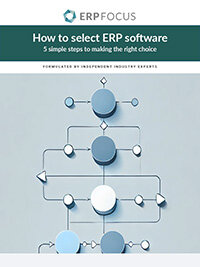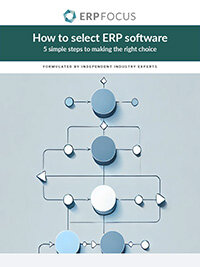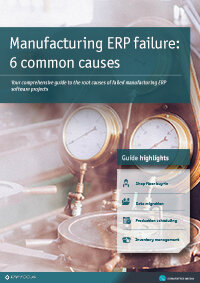3 Ways Business Growth Affects Your ERP Software
While the happy problem of enhanced business growth should appear to provide upsides, all the time, from an ERP systems perspective, sudden and unnoticed growth can cause all kinds of havoc.
1. System Scale Concerns
Perhaps the most concerning of these issues involves the unexpected realization that an enterprise’s ERP system is too small and unable to serve its resource requirements effectively. This condition can quickly lead to an overall reduction in resource performance throughout the business. It can also create administrative, sales or production demands calling for one or more short-term fixes that may or may not work as advertised.
Business growth outpacing systems growth can result in heavy performance constraints on an already overloaded operational ERP system
Business growth outpacing systems growth can result in heavy performance constraints on an already overloaded operational ERP system, and is sometimes referred to as the ‘departure point of the business death spiral.’ Unless an ERP management team develops a resolution plan quickly, an entire company can fall off the road quite rapidly, and while the scale issue may be resolved further down the line, the business will likely be out of the market entirely, leading to a different and more unpleasant kind of problem.
2. Creeping Costs
In the same way that systems scale concerns impact ERP processes, similar concerns exist in the case of creeping costs. While the prices of highly-sophisticated ERP systems are going down, primarily due to off-premise, cloud-based deployment, cash in-hand is nevertheless cash in-hand. If an enterprise can’t produce and push enough product through its ERP system to book revenue effectively, everything that moves, talks, walks and squawks inside an enterprise begins to cost more; whether it be related to time, money or infrastructure.
Recommended Reading: ERP Selection Survival Guide
The ultimate resolution to this scenario usually rests on an “either/or” formula. Either the company reduces its production and sales volume to match the enterprises currently limited ERP capabilities, or the enterprise ‘must’ upgrade their ERP software to deal with its expanding largesse.
3. Resource Limitations
This element represents a third horse in the enterprise ERP apocalypse driven by the dreadful sense that ‘less is less’, and ‘more costs mean more than an enterprise might be able to afford.’ Similarly to the first two sections, business growth drives complexity; complexity costs more overall; and both of these elements require additional resources in order to operate a newly expanded system infrastructure. The resource piece of this puzzle is probably the most critical of all since ERP systems are only as ‘smart as their operators.’
Together, these three elements work in concert, and tend to cascade negatively through an enterprise’s ERP infrastructure unless action is taken. This action stems from prudent management decision-making supported by a clear awareness of what is going on under the hood of your ERP system and throughout the business. At the end of the day, the positive business growth we all strive for can also trigger ERP system collapse in the blink of an eye. The only way to avoid facing the aforementioned threats is to have a clear plan in place for your system growth and to be ready to implement this plan at the flick of a switch.
Free white paper

How to Select ERP
Learn to select your ERP in 5 easy steps by following our expert's advice

Featured white papers
-

Manufacturing ERP Failure: 6 Common Causes
Get your comprehensive guide to the causes of manufacturing ERP failure
Download
Related articles
-

Top 10 causes of ERP implementation failure (and how to avoid it)
Few people in an organization ever understand how difficult an ERP implementation is, and how a f...
-

CMMC Compliance: What Aerospace and Defense Manufacturers Need to Know
Key insights on CMMC compliance, deadlines, and securing DoD contracts with CMMC 2.0 certificatio...
-

How to conduct a thorough ERP audit
The types of ERP audit, and step-by-step instructions on how to audit your ERP system

